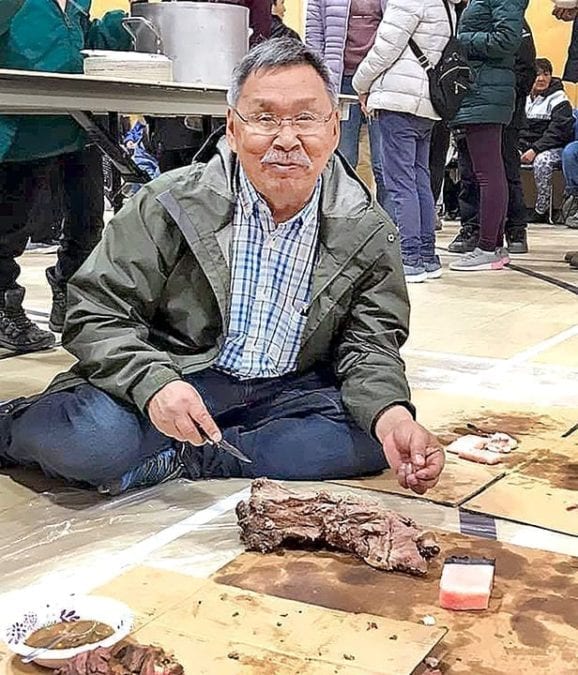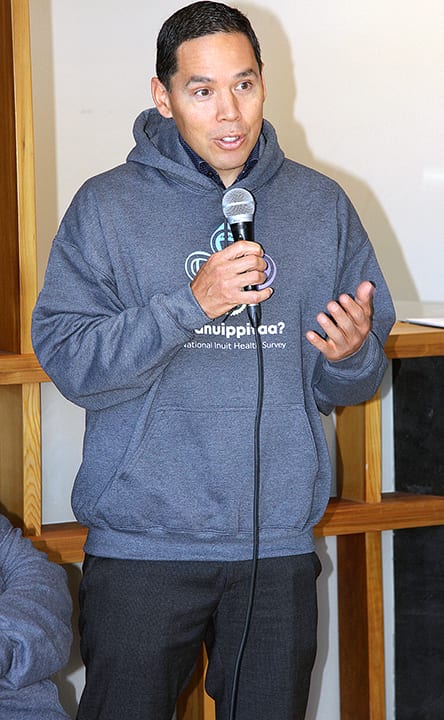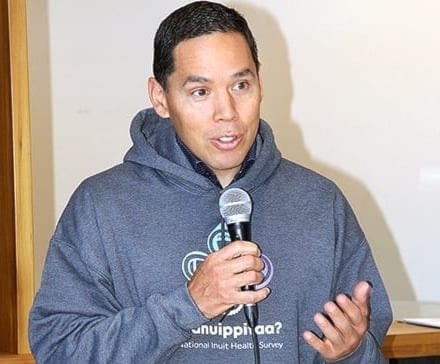Inuit Tapiriit Kanatami (ITK) launched Qanuippitaa? a national Inuit health survey that will include Inuit of all ages from every community in Inuit Nunangat, while holding its annual general meeting in Rankin Inlet on Sept. 11 and 12.
Qanuippitaa? echoes the names of the health surveys that operated in Nunavik in 2004 and 2017 and in the Inuvialuit Settlement Region, Nunavut and Nunatsiavut in 2007-2008, with the logo containing four distinct elements to reflect the collaboration between the four Inuit regions.

Qanuippitaa? is the only health survey controlled and led by Inuit, stated information from the ITK.
It's being developed and carried out in partnership with the four Inuit regional organizations, Inuvialuit Regional Corp., Nunavut Tunngavik Inc., Makivik Corp. Nunatsiavut Government, Inuit Circumpolar Council Canada, Pauktuutit Inuit Women of Canada and the National Inuit Youth Council.
The Government of the Northwest Territories, Government of Nunavut, Nunavik Regional Board of Health and Social Services, and Labrador Grenfell Health are also survey partners.
Qanuippitaa? is a permanent health survey, with federal funding being announced in 2018 of $82 million over 10 years, with $6 million a year ongoing.
Data collection is expected to begin in 2021 and take place every five years.
Another goal of this project is to provide Inuit with training and resources to conduct their own surveys on an ongoing basis to help ensure Inuit have greater control over research.
It will also provide survey- and research-related expertise and jobs that will stay in Inuit communities.
ITK president Natan Obed said Inuit are going to own the data produced by the project, and make the decisions on how the survey takes place, how the data is summarized and how it's communicated back to Inuit communities.
He said in the past, Inuit have often had to partner with southern-based academic institutions and go through southern-based processes to find out about their own health – but this Inuit-led initiative will, hopefully, lead to greater capacity for Inuit in working with academia and owning and controlling their own research interests.
“I've spent my career as someone who works on behalf of Inuit, and often the way in which we make headway with the federal government, provinces and territories is by using information (data),” said Obed.

“Often the data is collected by the federal government or independent researchers and gets summarized through their lens, and then we'd have to use that information to talk about the Inuit condition – whether it's the rate of cancer or our mental health – so we've often relied on other institutions to be able to tell our story.
“For me, personally, to be a part of creating a sustainable national Inuit health survey where we can rely on the summary data that comes out about our physical health, mental health, contaminants, diet and food security – and to know we've worked together across the four Inuit regions to come-up with the questions, then do the surveys in the language of choice to the Inuit who are participating, and then to be able to have control of that data and summarize it – gives me a huge hope that we are going to be able to talk more definitively about our social conditions than we ever have been before.
“That will allow us to work on policy change in a much more specific way, because it gives us more information we can rely on when we go to whoever we need to advocate or partner with to be able to improve conditions for Inuit.”
Obed said the survey is a large undertaking and the partners have taken a cautious approach.
He said the established working group has gone through a whole host of different scenarios on when they want to do the national project.
“2021 was a cautious marker right from the beginning. We got the money in 2018 so, for a lot of people, waiting three years to start a survey might be too long.
“But, for us, we had to start this from scratch and we want to do this right.
“In 2007/2008, the International Polar Year health survey went to three different regions. There have been two iterations of a Nunavik survey and the name Qanuippitaa? comes from that particular survey – so we have some expertise and some experience in all the different challenges and barriers to undertaking these surveys.
“We're structuring this survey in a way that will give us the best possible success, and we're partnering with public governments to ensure the data that we're trying to collect is something that is a shared hope of both government and Inuit.”
Obed said ITK wants the survey data to be utilized by governments and respected by all, including academics.
He said they're very cognizant of the sample size and all the different methodology they're going to undertake to ensure the health survey data and summary data are both defensible and respected.
“In the previous iterations of the survey, especially the International Polar Year survey, the random sample size was about 15 to 18 per cent of the Inuit adult population over 18.
“Because we're hoping to have this survey span the entirety of the Inuit population, we have other considerations, especially around consent and how to identify possible participants because there's ethical concerns in using land claim enrollment lists in some regions because of the limitations on what Inuit have said the lists can be used for.
“So, we have a number of challenges to work through on how to get a random sample size of an Inuit population within each one of our 51 communities, but we're sure we can get to an amicable solution through all this.
“We will ensure the proper ethics and respect for Inuit and privacy are paramount throughout the undertaking of this exercise.”
